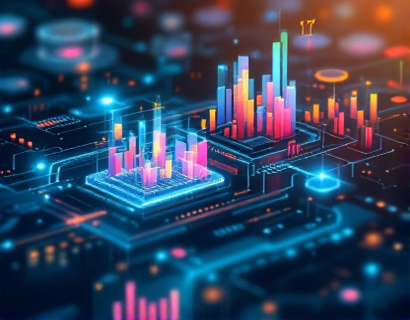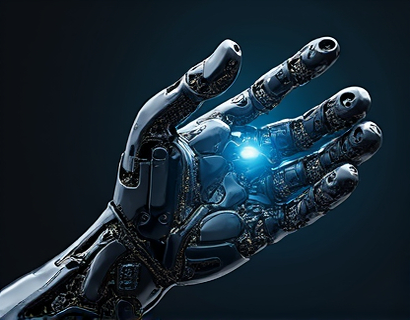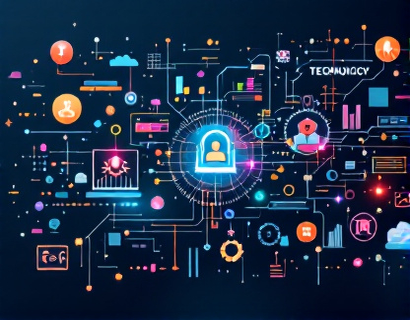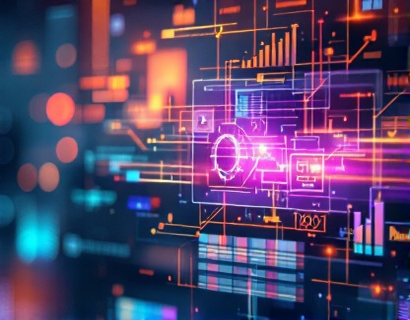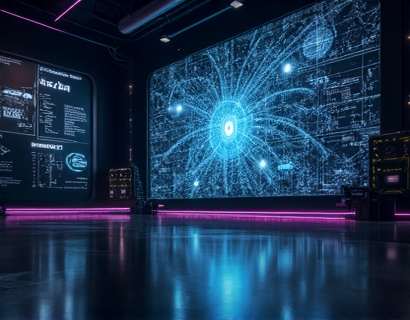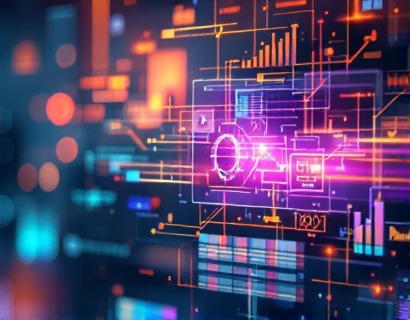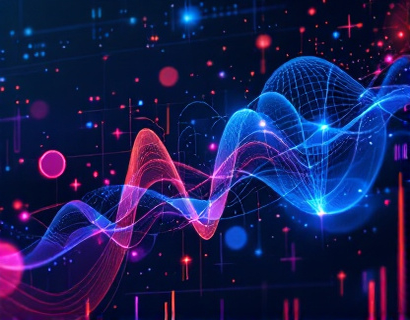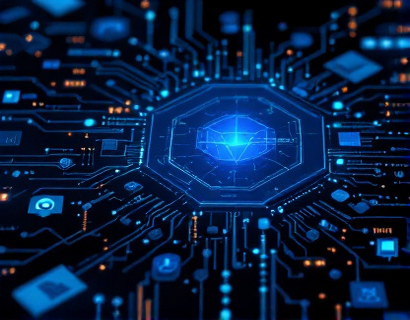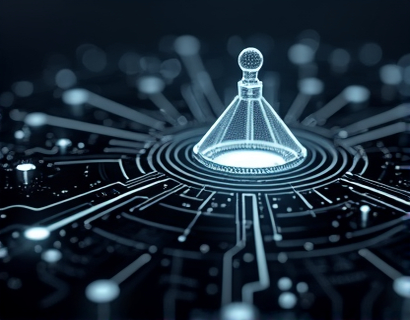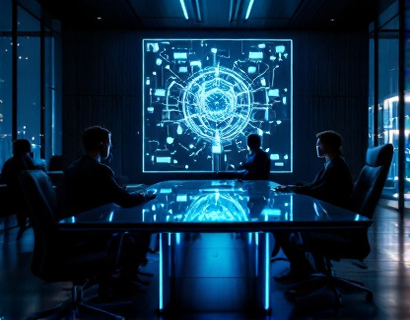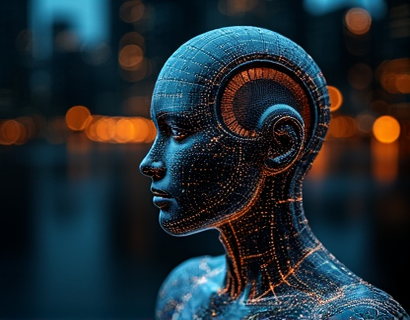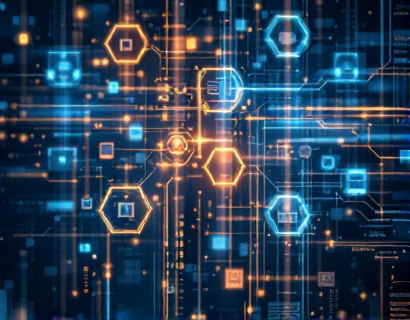Crypto and AI: Pioneering Enhanced Digital Experiences for the Future
The intersection of cryptocurrency and artificial intelligence (AI) is giving rise to a new era of digital experiences, one that promises to revolutionize how we interact with apps and services. This fusion of technologies is not just a novel concept but a rapidly evolving field that is already transforming various industries. As we delve into the latest advancements, it becomes clear that the combination of crypto and AI is set to redefine the landscape of digital services, offering unprecedented levels of security, efficiency, and personalization.
Understanding the Basics
To fully appreciate the impact of crypto and AI, it's essential to understand the fundamental concepts of each. Cryptocurrency, at its core, is a digital or virtual currency that uses cryptography for security. It operates on a decentralized network, typically a blockchain, which ensures transparency and immutability. On the other hand, AI refers to the simulation of human intelligence in machines that are programmed to think and learn like humans. These machines can process vast amounts of data, recognize patterns, and make decisions with minimal human intervention.
The convergence of these two technologies creates a powerful synergy. Cryptocurrency provides a secure and decentralized medium for transactions, while AI enhances the functionality and user experience of digital platforms. This combination is particularly significant in the context of app and service interactions, where the goal is to create seamless, secure, and highly personalized experiences for users.
Enhanced Security Through Crypto and AI
One of the most immediate benefits of integrating crypto and AI is the enhancement of security measures. Traditional digital services often struggle with security breaches and data leaks, which can erode user trust. By leveraging blockchain technology, transactions are recorded in a tamper-proof ledger, reducing the risk of fraud and unauthorized access. AI, with its advanced analytics and machine learning capabilities, can detect and respond to potential threats in real-time, further fortifying the security framework.
For instance, AI-driven systems can monitor network activity and identify anomalies that may indicate a security breach. These systems can automatically trigger alerts and implement countermeasures, such as isolating affected areas of the network or updating security protocols. This proactive approach to security not only protects user data but also ensures compliance with regulatory standards, which is increasingly important in today's data-driven world.
Personalization at Scale
Personalization is a key driver of user engagement and satisfaction in digital services. With the help of AI, platforms can analyze vast amounts of user data to create highly tailored experiences. This is where crypto comes in, providing a secure and transparent way to manage user data and preferences. By using blockchain, users can have greater control over their personal information, deciding who can access it and for what purposes.
AI algorithms can process this data to offer personalized recommendations, content, and services. For example, a streaming platform can use AI to analyze a user's viewing history and preferences, then recommend new shows or movies that align with their interests. The use of crypto ensures that this data is handled securely, building trust and encouraging users to engage more deeply with the platform.
Decentralized Applications (DApps)
Decentralized applications, or DApps, are a prime example of the crypto and AI fusion. DApps operate on a blockchain network, eliminating the need for a central authority. This decentralized nature not only enhances security but also promotes transparency and user autonomy. AI can significantly enhance DApps by providing intelligent and adaptive functionalities.
For instance, an AI-powered DApp can automate complex tasks, such as financial trading or supply chain management, with high precision and speed. The AI can analyze market trends, predict outcomes, and execute trades based on predefined criteria, all while ensuring that transactions are secure and verifiable on the blockchain. This combination of decentralization and intelligence creates a robust and efficient system that traditional centralized applications cannot match.
Smart Contracts and AI Integration
Smart contracts are self-executing contracts with the terms of the agreement directly written into code. They run on blockchain networks and automatically enforce and execute the terms when predefined conditions are met. AI can take this concept to the next level by adding intelligent decision-making capabilities to smart contracts.
Imagine a smart contract that not only executes a transaction but also evaluates the context and conditions in real-time, making dynamic decisions based on current data. For example, in the insurance industry, a smart contract powered by AI can assess claims more accurately and efficiently. It can analyze data from various sources, such as sensors in a vehicle or weather reports, to determine the validity of a claim and process the payout accordingly. This not only speeds up the process but also reduces the potential for fraud.
Enhanced User Interfaces and Experiences
The integration of AI in digital services also leads to more intuitive and user-friendly interfaces. AI can analyze user behavior and preferences to optimize the user experience, making interactions more natural and efficient. For example, voice assistants and chatbots powered by AI can understand natural language and provide relevant responses, enhancing the user's interaction with the service.
Moreover, AI can help in designing adaptive interfaces that adjust to the user's needs and context. For instance, an AI-driven interface can change its layout and features based on the user's device, location, and current task, providing a more seamless and personalized experience. This level of adaptability is particularly valuable in a world where users expect seamless and context-aware interactions across multiple devices and platforms.
Challenges and Considerations
While the potential of crypto and AI is immense, there are several challenges and considerations that need to be addressed. One of the primary concerns is the regulatory landscape. The decentralized nature of crypto and the complex algorithms of AI can make it difficult for regulators to enforce existing laws and create new ones. Ensuring compliance while fostering innovation is a delicate balance that requires collaboration between tech companies, regulators, and policymakers.
Another challenge is the technical complexity involved in integrating these technologies. Developing robust and secure systems that leverage both crypto and AI requires expertise in multiple domains. This can be a barrier for smaller organizations and startups, which may lack the resources to invest in such advanced technologies. However, as the ecosystem matures, more tools and platforms will emerge to simplify the development process.
Future Prospects
The future of crypto and AI is bright, with numerous possibilities on the horizon. As the technologies continue to evolve, we can expect even more innovative applications and integrations. For instance, the combination of blockchain, AI, and the Internet of Things (IoT) could lead to smarter and more autonomous systems. Imagine a smart home that not only learns your preferences but also manages energy consumption and security in a decentralized and secure manner.
In the financial sector, AI-powered trading platforms integrated with crypto assets could revolutionize investment strategies, making them more data-driven and efficient. The potential for cross-border transactions to become faster, cheaper, and more secure is also significant, thanks to the decentralized nature of crypto and the smart contract capabilities of blockchain.
In conclusion, the fusion of crypto and AI is not just a technological trend but a transformative force that is reshaping the digital landscape. By enhancing security, personalization, and efficiency, these technologies are paving the way for a new generation of digital services that are more secure, intuitive, and user-centric. As we continue to explore and harness this synergy, the possibilities for innovation and growth are endless.






